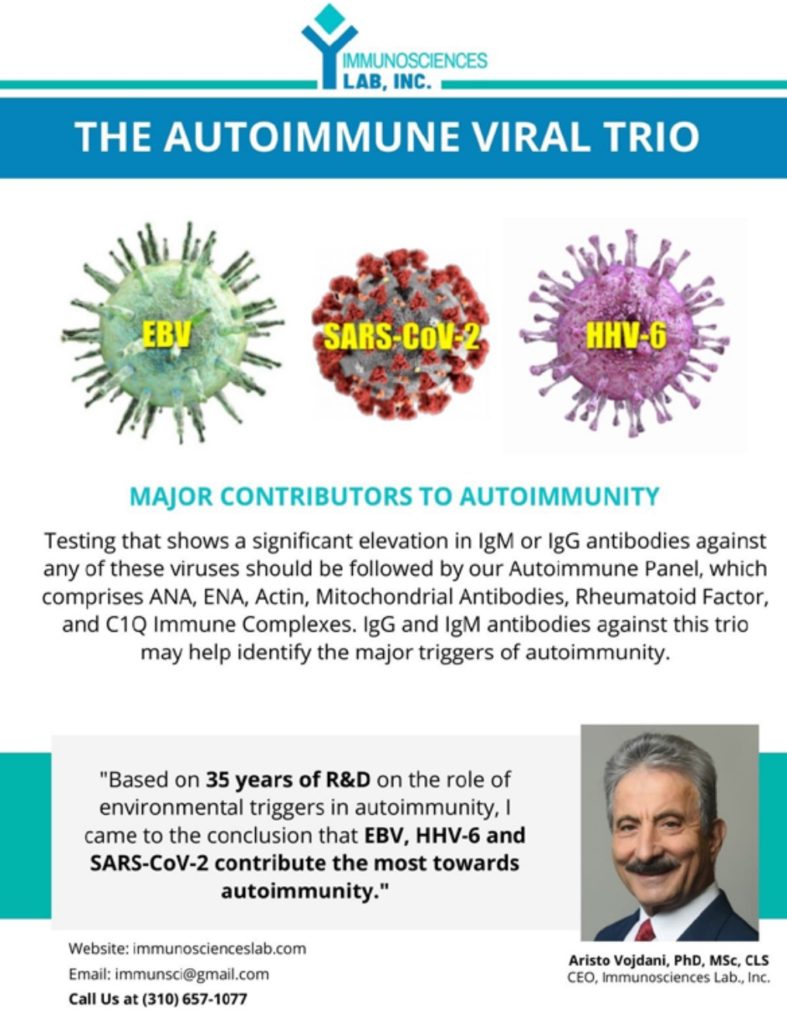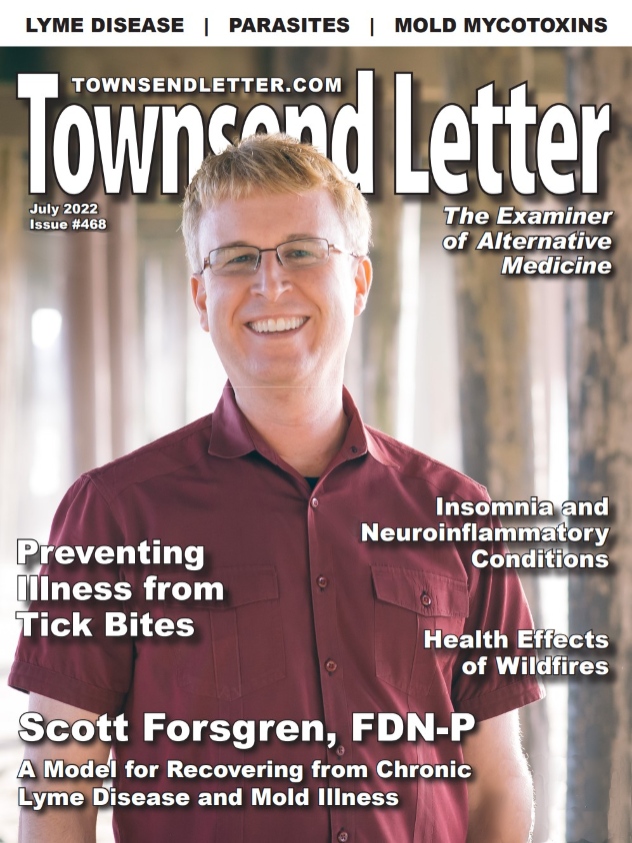Why Does the Origin of the Covid-19 Virus Continue to Be Such a Rancorous Dispute?
An investigative report published by Vanity Fair on March 31, based on release of hundreds of thousands of documents obtained by the Freedom of Information Act, details the ongoing dueling of those who think SARS-CoV-2 spilled over from bat to human versus those who think laboratory experimentation went awry accidentally or intentionally.1 In June of 2021 an evolutionary biologist, Jeremy Bloom, who had completed a paper examining viral genomic sequencing, discovered that some of the earliest SARS-CoV-2 sequences discussed in Chinese studies were missing from databases, including the one at the NIH. Bloom thought that the sequences had disappeared without a trace and that the Chinese government sought to delete the sequences to avert any suspicion that China played a role in causing the pandemic. He had determined that the NIH removed the sequence data following a request by the Wuhan Institute of Virology (WIV). Bloom had notified the NIH about his pre-print wanting their input as to why the viral sequences had been removed.
At the NIH, Director Francis Collins was greatly concerned about Bloom’s paper and hastily arranged a Zoom meeting. Collins invited Anthony Fauci and a few other NIH personnel as well as two outside experts asking Bloom to do the same. For “team” Collins, there was evolutionary biologist Kristian Andersen and virologist Robert Garry, both of whom had sided with a natural zoonosis origin of SARS-CoV-2. Bloom invited fellow evolutionary biologist, Sergei Pond and genetic biologist, Rasmus Nielsen.
Within minutes after starting the Zoom call Andersen and Nielsen were yelling at each other. Andersen claimed that the Chinese had the right to delete genetic sequences as allowed by NIH guidelines and that Bloom had no “ethical” right to do further study on such sequences once deleted. (Pond’s opinion of Bloom is that he is one of the most ethical scientists he has ever known.) Andersen further claimed there was nothing unusual about the SARS-CoV-2 sequences that the Chinese had reported. Nielsen countered that the “Wuhan sequences were extremely unusual and puzzling.” Andersen then proposed that he could arrange with the server storing the pre-print to modify Bloom’s text or even eliminate it to prevent any controversy stirring up the conspiracy fanatics. Fauci immediately disagreed with Andersen’s proposal.
None of this Zoom call came to light until Bloom wrote about it in January of this year. Both Nielsen and Garry objected to Bloom’s discussion of what occurred at the meeting and denied that Andersen proposed to modify the pre-print. But Pond agreed with Bloom’s account. As the Vanity Fair investigation described it, there was a “siege mentality” present at the NIH in June of 2021 with reputations to maintain, research grants on the line, and risky research projects that could be terminated.
Of course, the background actor in all of this was a little known NGO, the Wildlife Fund, lately renamed the EcoHealth Alliance, whose director, Peter Daszak, characterized by Vanity Fair as “part salesman, part visionary” who funded his organization through grants from federal agencies. Before 2010 the Wildlife Fund advocated for Florida manatees being slaughtered by motorboaters. With a budget that was teetering year by year, Daszak needed substantial and sustainable funding. Daszak’s virology work had taken him into Cameroon’s tropical forests in the early 2000s to explore the zoonotic relationship between bats carrying virus and diseases like Ebola. (The reservoir for Ebola virus remains unknown.) Daszak’s interest in bats extended into China where he developed a relationship with WIV virologist, Shi Zhengli, who has a fearless reputation of studying bats in their caves. Zhengli’s work focused on SARS-like coronaviruses living in bats. Zhengli provided Daszak, whose EcoHealth Alliance’s office is off of Central Park in NYC with no laboratory, a well-known lab for studying emerging viruses that posed pandemic risks. In 2009 USAID awarded a five-year $18 million grant to what was then, the Wildlife Fund, to predict viral emergence and pandemic risk, by studying bats and their viruses. For Daszak this was a homerun enabling the non-profit’s transformation to EcoHealth Alliance, providing monies to fix air conditioning in their run-down office. Now Daszak had the money to set up studies with Zhengli at the WIV. He boasted that his NGO would be on the frontline of predicting future viral outbreaks.
Then in 2014 Daszak was awarded $3.7 million from Fauci’s division of the NIH. The grant was titled, “Understanding the Risk of Bat Coronavirus Emergence.” The viral sequences of bats would be studied to determine the risk for human disease. The Wuhan Institute of Virology received $600,000 of the NIH funding to do the study. (Daszak provided the WIV $1.1 million from his earlier grant from USAID.) As the Vanity Fair investigation reveals EcoHealth Alliance sponsored a great many “educational” events at a restaurant off of Dupont Circle for biologists with government agency funding bureaucrats– $8,000 of brie and Chardonnay was a great investment. The WIV studies were not confined to simply finding bat viruses. Viral gain-of-function studies, like modification of the MERS virus, were definitely among Daszak’s grant applications. And the NIH approved such grants not once, but twice until finally in 2020 the NIH grant was temporarily cancelled, then reactivated, and then again suspended.
Gain-of-function studies are a prudent or not so prudent part of science. The implicit reason for conducting such research is to be better able to study viral infections in humans, enabling better diagnostics and treatment. Unfortunately, gain-of-function studies also increase the risk that a virus may become more virulent, increasing infectivity and contagion. In addition to the WIV, Daszak contracted UNC Chapel Hill virologist, Ralph Baric, who specializes in coronavirus. While Daszak was experiencing challenges with getting a renewal of his NIH contracts in 2017, the Department of Defense’s DARPA became very interested in gain-of-function viral research. DoD was particularly interested in obtaining information about what was happening in virology laboratories in the BRICS (Brazil, Russia, India, China, South Africa) and related countries. Zhengli and Baric along with Daszak burned the midnight oil putting together a grant application for DARPA by a March deadline. Not only was the application late but it was a hodge-podge of research purpose, goals, data, and whatnot lacking, according to the DARPA reviewers, “common sense.” One particular gain-of-function part of the application was alarming: The grant would study “SARS-like bat coronaviruses for furin cleavage sites and possibly insert new ones that would enable them to infect human cells.” A furin cleavage site enhances the entry of the virus into a cell.
Years later Garry would write that the furin cleavage site of the SARS-CoV-2 is stunning: “I really can’t think of a plausible natural scenario where you get from the bat virus or one very similar to it to SARS-CoV-2 where you insert exactly 4 amino acids/12 nucleotides that all have to be added at the exact same time to gain this function…I just can’t figure out how this gets accomplished in nature.”
The DARPA application was not granted. However, according to virologist Simon Wain-Hobson, the DARPA application “was a road map to a SARS-CoV-2 virus.” Given that Baric had approved this research, the Wuhan Institute would have sufficient motivation to conduct such studies even without DARPA approval, especially with China’s thirst for intellectual property, and its military interest in (biologic) advanced weaponry.
As the pandemic unfolded in 2020, Daszak was among those who predicted that the pandemic would be easily contained based on research work that his organization and the WIV had done. As the pandemic spread Daszak was instrumental in March in organizing a letter to the journal, Lancet, arguing for the natural zoonotic spillover origin of the virus. He was clearly worried about his NIH funding being revoked and wanting the WIV lab not to be blamed for the virus. Three months prior to the December 2019 outbreak of cases in Wuhan, the WIV took down from their database the viral genome of 22,000 viruses based on studies funded by Daszak’s NGO through the largesse of the NIH. When the WHO organized a commission to study the virus in Wuhan, Daszak was the only US scientist invited. He was quarantined for two weeks and then allowed a one-day visit to WIV for questioning of a very limited nature. The WHO report concluded that a zoonotic spillover was “very likely” and that a laboratory origin of the virus was “very unlikely.” However, most scientists were not convinced. The data was incomplete, not conclusive, and there was no willingness by the WIV and the Chinese government to give full access to patient virus data. All claims that the virus was genetically modified have been labelled wrong and any acceptance is deemed a conspiracy theory.
On February 26, 2022, virologist Michael Worobey, Andersen, Garry, and 15 co-authors released to the public a pre-print claiming “dispositive evidence” (evidence that settles a dispute) that SARS-CoV-2 emerged from the Huanan market. Ironically the Chinese CDC published a day earlier their own pre-print finding that there was no evidence of SARS-CoV-2 found in 18 animal species studied from the market, but there was ample evidence of the virus found on surfaces throughout the market. Rather than being the origin of the virus, the market was an “amplifier” of it.
Those scientists most adamant about the natural origin of the virus are very worried about the consequences if a lab origin is established to be the case. It is outrageous that the WIV has removed the genetic sequences of coronaviruses from their database. The “dispositive” evidence for a natural origin of the virus is hardly settled. A viral origin based on a laboratory experiment gone wrong is no crackpot conspiracy theory.
Cover Article: Recovering from Lyme Disease and Mold Illness by Scott Forsgren
The treatment of Lyme disease has evolved considerably over the past two decades. Conventional medical treatment remains a short course of antibiotics following diagnosis of Lyme after a tick bite. Chronic Lyme disease isn’t considered a valid diagnosis. For those patients dealing with chronic Lyme disease, conventional care is a frustrating battle convincing doctors and insurance companies to prescribe and pay for antibiotic treatment; unfortunately, such requests are often denied and patients are asked to consider antidepressant medication. Lyme-literate doctors aware of the chronicity of Borrelia, Bartonella, and Babesia infections do treat patients with antibiotics typically on a long-term basis. However, antibiotic therapy is fraught with potential adverse effects, not the least of which is disruption of a normal microbiome and Candidiasis. Additionally, not a few chronic Lyme disease patients also suffer with mold illness and related chronic problems. Neither a short nor a long course of antibiotics appears to be sufficient treatment for patients with Lyme disease.
Scott Forsgren, like many other practitioners in the Lyme arena, suffered greatly after he had a tick bite two decades earlier. As he describes in this issue’s cover article, he developed excruciating, wide-ranging physical and mental symptoms. Unlike some folks, Scott took his problem from physician to physician, seeing 45 doctors over a period of eight years. Remarkably the practitioner that put him on the right path practiced Electroacupuncture according to Voll (EAV) diagnosing energetically a Lyme disease infection. Scott also was introduced to the problem with mycotoxins—he had been living in an apartment that was moldy. The path to recovery not only took him to managing Lyme infection and mold toxins but also addressing overall wellness issues mentally and physically.
Forsgren’s model would argue against immediate treatment with antibiotics unless they are absolutely indicated. Instead, he would recommend as a first step to begin the process of detoxification and “drainage.” If the organs meant to eliminate toxins are not functioning well, there is little chance for systematic improvement. While removing toxins internally, the external environment needs to be cleaned up. A Lyme disease patient cannot recover while living in the midst of mold. Of course, a diet clean-up is in order as well; patients cannot remain on a standard American diet. Addressing sleep and mental health issues are vital for recovering health. Antibiotics (and anti-fungals) have a place in the Lyme disease program, but detoxification needs to be underway first in restoring health.
1. Eban, K. “This shouldn’t happen”: Inside the Virus Hunting Nonprofit at the Center of the Lab-Leak Controversy. Vanity Fair. March 31, 2022.











